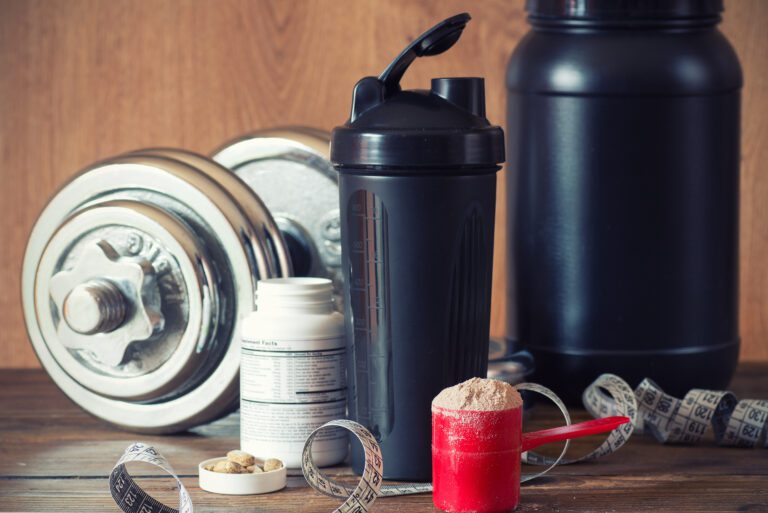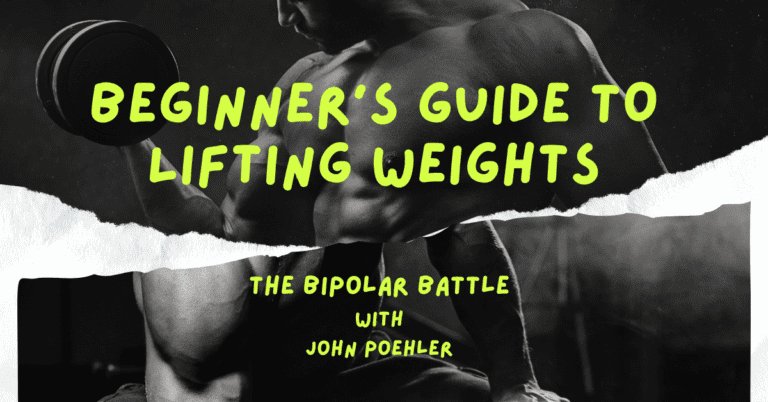Weight Lifting is One of the Best Workouts to Participate in When You Have Bipolar Disorder
Weight lifting is one of the best forms of exercise to participate in when you live with bipolar disorder. You may have also heard it referred to as weight training or resistance training.
Weight lifting is about turning the weak points of our body into strong points. It is about shooting for short-term goals to coincide with your long-term vision.
With weight lifting, I practice:
- Consistency
- Persistence
- Follow-through
- Breaking barriers
- Mindfulness
- Focus
- Envisioning the future
When I lift weights, I compete against myself, to better myself as a person.
That is my focus.
I have always been a proponent of exercise and an active lifestyle. Weight lifting is my favorite form of exercise.
*As a reminder, please do not start a new workout program or eating plan without first consulting your doctor.
Weight Lifting Basics
Weight lifting is a type of training where you utilize weights to perform both compound and isolation exercises.
Weights can be in the form of:
- Dumbbells
- Machine Weights
- Barbells
- Bodyweight
- Sandbags
- Anything that you can lift
Each exercise is comprised of sets and reps. A certain number of “reps,” or repetitions, make up a set. For example, curling a dumbbell for 10 or 15 reps or times comprises one set.
Living with bipolar disorder, I constantly seek out ways to manage my illness. Weight lifting not only helps my body, but also my mind. It builds my body and strengthens my mind together.
The Benefits of Weight Lifting
There are so many positive benefits to weight lifting. Some of them include:
- Increased muscle tone
- Decreased body fat percent
- A decrease in blood pressure
- Decreased resting heart rate
- Better focus
- Increase in energy
- Greater ability to handle stress
- Increased metabolism
- Increase in self-confidence
- Better quality of sleep
- Reduced anxiety
- Enhanced mood
And the list goes on.
When you incorporate weight lifting into your workout program, please realize that the number on the scale can actually go up. It can also fluctuate from day-to-day. Since muscle weighs more than fat, this makes sense.
Also, the amount of water within your muscles can change, sometimes drastically, based on your daily hydration. As you build more muscle, expect that there will be fluctuations in your weight.
Another reason I enjoy weight lifting is the ability to record and track my progress. I use a Google Doc that I can access from my phone. Before the start of each week, I map out my lifting schedule.
I use this journal to record my daily and weekly progress. For each workout, I input the exercise, sets, and weight lifted via my digital journal.
My Weight Lifting Journey Begins
I moved back to Colorado from Missouri in 1996. This was the start of my junior year in high school. I moved to Boulder to live with my dad and stepmom.
During my junior year, I started lifting weights. I took a beginner’s weight lifting class at my high school, and I was instantly hooked.
Since high school, I have lifted weights on and off. It has always helped me get through rough times and propel me toward good ones. I know this might sound weird, but if you have lifted weights before, you know what I am talking about.
Throughout the years, I had a difficult time keeping a consistent lifting schedule. It seemed that my exercise habits ebbed and flowed with my moods.
Personal Training
In 2006, I belonged to a local gym. There, I participated in a body transformation contest.
The gym recorded my weight, body fat percentage, and blood pressure both pre- and post-competition. Each number went down, and I’m proud to say I placed in the top 5!
This competition solidified my desire to become a personal trainer. Not only did I place in the body transformation contest, but I wanted others to feel as fantastic as I did.
I researched options to pursue a personal training education. Most of the options I researched were online programs, but I found a particular brick-and-mortar establishment I really liked. I was drawn to the hands-on approach, as opposed to the quick online certification method. At least, that was the reality.
In 2007, I enrolled in the National Personal Training Institute, located in Lakewood, Colorado. It was a six-month program, and I went to school Monday through Thursday.
During the morning, students trained each other. We created workouts for our peers based on their goals. In the afternoon, we learned all about program development, anatomy, types of exercises, and more.
My Weight Lifting Journey Continues
Weight lifting builds up my mind and body, so I can function daily. As I get older, I’m slowly feeling the effects of age on my body.
The past couple of years have been rather difficult with my workout adherence. Physical roadblocks have crept up, but I have become an expert in knocking them down.
I’ve utilized extra support from doctors, physical therapists, specialists, and coaches to help get me through those physical roadblocks.
The importance of exercise in my daily life has increased dramatically.
Many believe that weight lifting is based on vanity. Although many are motivated by outward appearances, I do not fall into that category.
If I do not work out on a particular day, my body and mind feel the effects. It’s hard for me to focus and engage with others, and I feel extremely sluggish.
The point is that weight lifting for me each day is a non-negotiable and part of my treatment plan. I simply need to do it.
I used to work out multiple times a day when I was younger. Not much recovery time was needed. Looking back, mania fueled most of these workouts from my earlier years.
Today, I do not have the recovering capability of my younger self. To ward off any potential injuries, I warm up and cool down properly. I finish up with a nice session of stretching.
Present Program
I set up an in-home gym in my apartment. Working out at home is convenient and offers me flexibility. There is no excuse for me to miss a workout. Plus, I can add an extra workout without planning a trip to the gym.
Nothing is worse than wanting to work out and not being able to do so—especially when it could have been prevented by utilizing proper form, warming up, cooling down, and stretching.
Currently, I lift weights every day and take a rest day when needed. Listening to my body has been key. Sometimes, I need an extra day to rest and recover.
Each day, I train two to three body parts, consisting of three to eight sets per exercise. Sometimes, I’ll increase the total number of sets, and I tweak the rep range and weights used each week. Again, I gauge how I feel and plan accordingly.
I cannot jar my back with the constant impact of running. This is due to an old injury. Because of this, I utilize my fold-up indoor exercise bike. I change up both the speed and resistance to increase or decrease the intensity of the workout. This is a great low-impact exercise.
When it is nice outside, I will go for a walk or a bike ride.
Last Thoughts
Weight lifting provides me the opportunity to push my body to its limits. Bipolar disorder pushes my mind beyond the line between sanity and insanity.
When my body tells my body it can’t do anymore, and I push past those last few reps, I use my mind to get me through. This way, I train my mind to overcome hardship. Doing this over and over each day, I strengthen my mind to get past a challenge or hardship when it arises.
I’m not saying to just “fake it ’til you make it” sort of thing. Training gives you the practice to conquer adversity in a safe and controlled environment. It builds my confidence to know that I will be able to tackle any kind of adversity ahead of me and thrown at me.
Adding weight lifting to your daily coping activities will help you better manage your bipolar disorder.
If you have not had the opportunity to lift weights, I suggest you try it and see if you like it.







